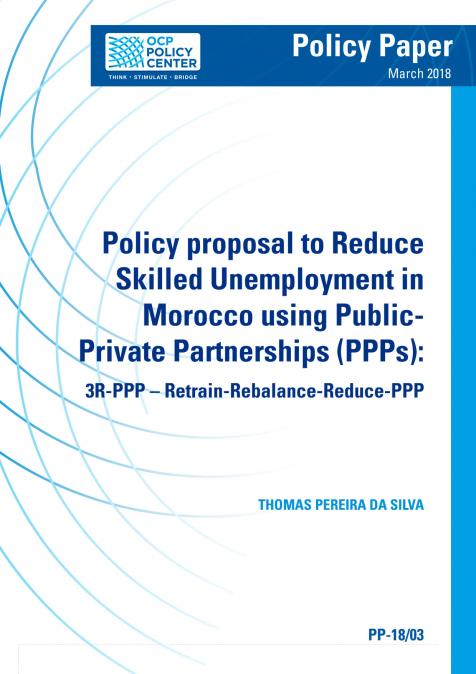Publications /
Opinion
Libya faces a paradox: it has a bloated public sector employing millions, yet a crippling unemployment crisis, especially among young people. According to the Libyan Audit Bureau’s 2023 report[1], over two million people work for the government, a figure that excludes state-owned enterprises such as oil companies, banks, and utilities companies. With a total labor force of 2.5 million[2], out of every ten Libyan adults, eight are employed by the government. This massive public workforce, consuming 51% of government expenditures in 2024, exists alongside a 50% youth unemployment rate[3], and the estimated annual addition of 20,000 graduates to the job market. This disconnect highlights the urgent need for a fundamental shift in Libya's economic policies.
This dilemma has persisted for years. Discussions about economic diversification to create jobs outside the public sector have long been a staple of Libyan discourse. But while the number of officials talking about diversification has diversified, the economy itself has not. The prevailing view among Libyan officials is that the state should lead this process. Consequently, the government, through its institutions and with assistance from international organizations, has produced numerous economic-diversification strategies. Unsurprisingly, given their authorship by public officials, these strategies invariably envisage a central role for the state, dictating everything from which sectors to prioritize to how they should be developed. The private sector is given a secondary role, expected to participate only after the government has laid the groundwork. The Libyan industrial zones project is only one example[4]. Furthermore, many Libyan bureaucrats distrust the private sector deeply, viewing it as a group of self-serving individuals eager to exploit the Libyan people. This perception reinforces the belief that the private sector must remain under strict government control.
While some nations, such as the Asian Tigers, have successfully pursued state-led development, Libya is unlikely to become a tiger. Weak institutions, a lack of technical expertise, and persistent political fragmentation are just some of the obstacles preventing the government from fulfilling this ambitious role.
A shift in mindset is critically required. The International Labour Organization reports that micro, small, and medium-sized enterprises (MSMEs) account for over 70% of total employment in many countries. Therefore, a thriving Libyan MSME sector could be a significant source of employment. However, Libyan MSMEs face many challenges. I focus on one key challenge here: access to finance.
Currently, aspiring Libyan entrepreneurs must either rely on personal savings or borrow from family and friends to secure the necessary capital to start a business. This limited access to funding creates two barriers. First, it restricts market entry to individuals from wealthier families. Second, it compels those with limited capital to pursue low-capital ventures. Some argue that this explains the prevalence of retail shops among young people in Libya, as these businesses often require less initial investment.
Many factors contribute to the scarcity of MSME financing in Libya. Commercial banks typically demand 100% collateral for loans, and this collateral cannot be residential property. Acceptable forms of collateral include land or commercial buildings, but only with official titles. Worse, the office of the Libyan property registrar has been closed since 2008. These conditions make it virtually impossible for unemployed young people to secure startup loans.
In response, in January 2022[5], the Central Bank of Libya (CBL) mandated commercial banks to allocate at least 10% of their investment portfolios to MSME financing, a figure recently increased to 20%[6], through Islamic financing. However, these directives have resulted in zero financing so far. Banks lack the in-house expertise to design Sharia-compliant products tailored to the specific financing needs of MSMEs. Additionally, this requires a shift in mindset within bank risk departments, as Islamic finance emphasizes risk-sharing rather than complete reliance on collateral. The newly established Sharia boards within each Libyan bank are only trained to approve or reject transactions, but not to develop Sharia-compliant MSME financing products.
Although the CBL owns most of the banks in Libya, coordination of new lending has been challenging. An employee at Al-Jamhouria Bank noted that the bank is awaiting CBL guidance on approved financing products and their implementation. Meanwhile, CBL officials indicate they expect banks to develop and submit proposed products for approval, based on each bank’s investment priorities. A serious ambiguity exists in relation to the division of responsibilities in this area. The CBL should initiate a dialogue with commercial banks to address this issue. Interactive discussion, allowing banks to ask clarifying questions, is crucial. This approach would be more effective than the current reliance on unilateral directives, ‘manasheer’ as they are known in Libyan banking circles.
Even if the CBL were to proactively design ready-to-use Islamic financing products, the banks would likely encounter difficulties in evaluating applications for loans. Unlike conventional financing in which banks primarily focus on evaluating the provided collateral, Islamic financing necessitates a thorough assessment of business plans, revenue forecasts, and the entrepreneur's business skills. Such expertise is currently lacking within Libyan banks. Additionally, understanding the existing incentive structures is crucial. The abolition of interest rates in 2013 removed a key incentive for banks to issue loans without a markup. Why take on the risk of lending to a small business when risk-free car purchase financing via Murabaha for individuals is so lucrative? To illustrate, a bank purchases a car from a dealer for 100,000 Libyan dinars and sells it to a client for 125,000 LYD through a payment plan, with monthly payments directly deducted from the client's public salary, resulting in a risk-free 25% profit for the bank. This financing scheme is in high demand because it is the only form of loan accessible to individuals in Libya. Put simply, many people would sell the car instantly at a price below market value only to get cash in hand.
The CBL's latest banking-sector report indicates a 145% profit increase for banks between Q3 2023 and Q3 2024[7]. Consequently, persuading banks to venture into uncharted territory and develop low-cost financing options for private businesses—which inherently carry risk and may not be immediately profitable—will be a significant challenge.
Deploying Islamic financing products for private businesses in Libya will require substantial collaborative efforts from both the CBL and commercial banks. It also necessitates careful consideration of the de-facto interest rates that some Islamic products could impose arising from banks’ high administrative costs. One immediate step to overcome these hurdles is to legally authorize investment firms to act as intermediaries, channeling financing from banks to MSMEs. Without prioritizing this issue at the highest levels and leveraging external expertise, meaningful progress is unlikely.
Finally, Libya's current letters-of-credit system to access foreign currencies disproportionately benefits retailers over value-adding sectors. The CBL provides access to foreign currency at the official exchange rate for large businesses importing goods into the Libyan market. However, because of the distorted nature of the exchange rate system, many of these businesses price their goods based on the black-market rate, around 30% higher as of February 2025. This means the CBL is effectively subsidizing retailers' profits through exchange-rate arbitrage. Currently, non-retail sectors receive no support.
In effect, the CBL's policies, despite their intentions, are counterproductive to economic diversification.
[1] Reports available at https://www.audit.gov.ly/ar/reports/.
[2] Reference: https://tradingeconomics.com/libya/labor-force-total-wb-data.html.
[3] Reference: World Bank Document.
[4] For more information, please see https://libyareview.com/51705/libya-revives-14-industrial-zones-for-economic-growth/
[5] CBL Decree # 1/2022
[6] CBL Decree # 4/2025









